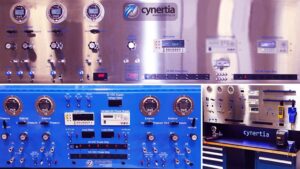Instrumentation Benches: The Unsung Heroes of Testing & Calibration
Walk into any modern industrial plant and you’ll see massive machines, blinking control panels, and entire networks of cables humming with energy. But tucked away in a quiet corner, you’ll likely find something far less dramatic which is the instrumentation bench.
It doesn’t roar like a turbine or shine like a brand-new robotic arm. It doesn’t draw much attention at all. Yet for engineers and technicians, it’s the heartbeat of precision, the place where small details are checked, corrected, and perfected so that the larger system can run without fault.
What exactly is an instrumentation bench?
Think of it as a workstation built for accuracy. It’s where testing, calibration, and troubleshooting of instruments happens. From pressure gauges and transmitters to flow meters and sensors, an instrumentation bench provides a controlled space with all the necessary tools neatly laid out.
It’s not glamorous, but it’s absolutely necessary. An instrumentation bench provides a controlled environment where all the tools a technician needs are organized and ready:
Power supplies
Calibrators
Simulators
Measurement devices
Instead of wasting time tracking down scattered equipment, the bench brings it all together. Every tool is within arm’s reach, neatly arranged, and ready for use. This centralization means technicians can work faster, make fewer mistakes, and trust that every reading is consistent.
Why does it matter?
Industrial plants depend on reliable measurements. If a temperature sensor reads a few degrees off, or a pressure transmitter drifts from its calibration, the whole system can suffer from efficiency losses to arising safety concerns. Instrumentation benches allow technicians to spot these errors, fine-tune devices, and ensure everything works as it should.
It’s not just about compliance with standards, it’s about peace of mind. Knowing that your instruments are accurate means smoother operations and fewer headaches down the line.
The human side of it
For technicians, the instrumentation bench is more than just a desk with equipment. It’s a problem-solving station.
Every day, faulty or misbehaving devices are brought in, hooked up, and tested. With patience and skill, technicians put them through rigorous checks until the problem reveals itself. There’s pride in the work, in bringing a gauge back to life, in hearing a sensor deliver a precise reading again, in knowing that the system outside the workshop is safer and smoother because of what happened at this bench.
For younger engineers, it’s often a training ground. The bench is where theory becomes reality. It’s where they first learn that fixing a device isn’t just about following a manual but it’s about observation, patience, and methodical thinking. Mistakes are made here, but they’re also corrected here, and every error becomes a lasting lesson.
In many ways, the instrumentation bench is where the next generation of engineers learns not just about tools, but about discipline and responsibility.
Experience: The Difference Make
Research, tools, and technology are important, but the real secret weapon is experience. An experienced technician can often spot a problem long before it becomes serious. Years of working with instruments mean they know how to troubleshoot faster, avoid costly mistakes, and save both time and resources.
Where a less-experienced hand might try several fixes before finding the issue, someone seasoned will likely diagnose it right away. That experience keeps downtime short, costs lower, and operations more reliable.
Looking ahead
As industries shift toward digitalization, smart systems, and Industry 4.0, instrumentation benches are evolving too. They’re no longer just static desks. Modern benches can now include:
Software integration for seamless testing and calibration
Automated calibration processes to reduce human error
Digital twins to simulate real-world conditions before deploying instruments
Data logging and analysis tools for predictive maintenance
These advancements make the bench not only a place of repair but also a hub of innovation and foresight. They allow technicians to anticipate failures before they occur and ensure systems are future-ready.
But despite all these innovations, the core purpose hasn’t changed, making sure every instrument is reliable, trustworthy, and precise.
Final Thoughts
The future of industrial automation depends on precision, reliability, and adaptability. Instrumentation benches are no longer just quiet corners for calibration, they’re evolving into smarter, modular workstations that move in step with the demands of modern industry.
For technicians, they remain places of problem-solving and pride. For businesses, they’re the silent guardians of accuracy, efficiency, and safety.
In a world where the smallest error can have the biggest consequences, the instrumentation bench is proof that sometimes the most important work happens in the quietest places.
At Cynertia, we specialize in creating instrumentation benches that are not only accurate but also scalable and user-friendly. Whether you need to enhance your existing systems or develop a fully customized solution, our team can design a setup that ensures consistency, efficiency, and long-term performance.
Get in touch with us today to discover how our advanced instrumentation solutions can streamline your operations and give your business the precision it deserves.

